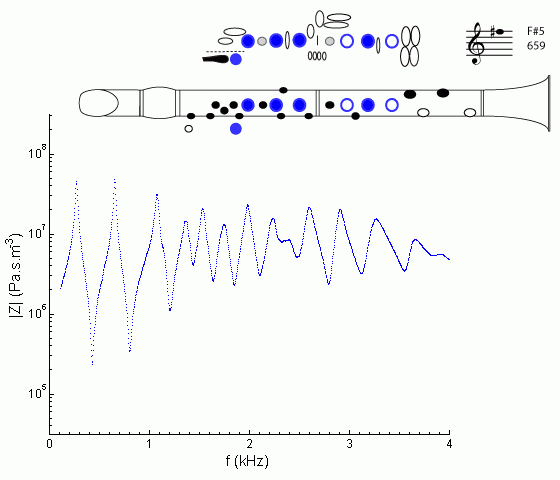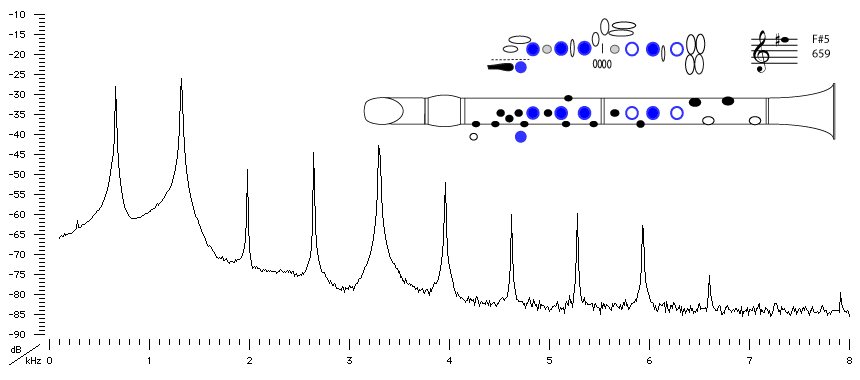| Acoustics of the clarinet |
Bb clarinet |
F#5 |

|
Fingering Acoustic schematic Non-specialist introduction
to acoustic impedance Notes are the written pitch. |
Note how similar this spectrum is to that for B3. (Of course, the clarinet overblows a 12th.) The only substantial difference is the reduction in the first peak. The purpose of the speaker key is just that: to destroy the fundamental resonance so that the instrument will not 'drop down' to the lower register. See register hole for details.
For a general discussion of the clarino register, see the description on B4.

Sound spectrum
of a Bb clarinet
played using fingering for F#5.
For more explanation, see
Introduction to clarinet acoustics
|
Contact:
Joe Wolfe
/ J.Wolfe@unsw.edu.au |